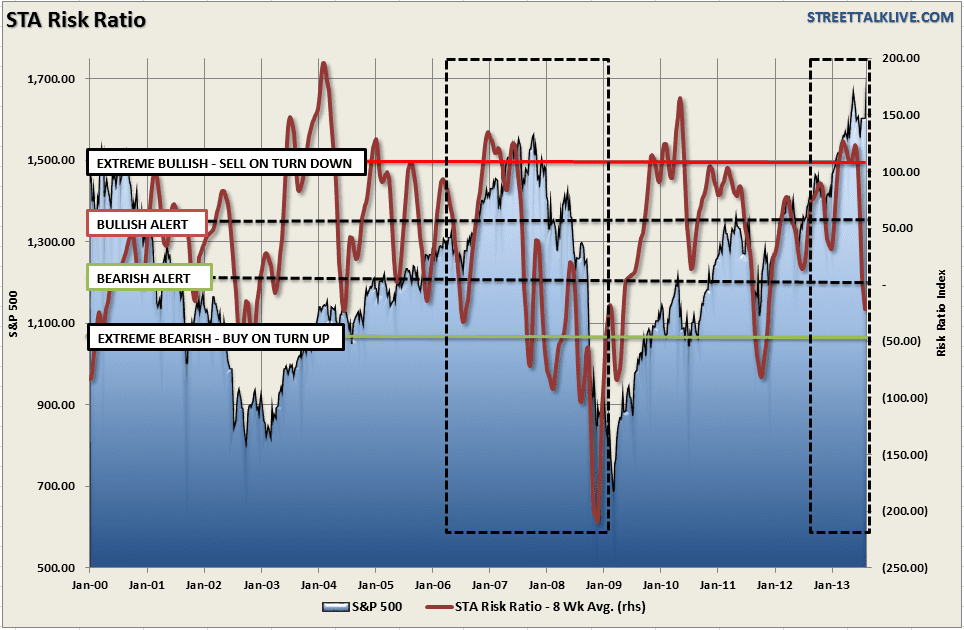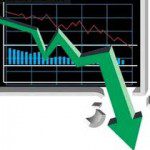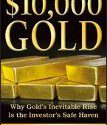The collapse in the STA Risk Ratio, which tracks the most common measures of  market sentiment, is a clear signal that something has changed in the market and that risk of a broader correction has risen sharply. While this is only one measure of “risk” it does suggest that investors should pay closer attention to their portfolios than normal and implement some risk management practices.
market sentiment, is a clear signal that something has changed in the market and that risk of a broader correction has risen sharply. While this is only one measure of “risk” it does suggest that investors should pay closer attention to their portfolios than normal and implement some risk management practices.
So writes Lance Roberts (streettalklive.com) in edited excerpts from his original article* entitled STA Risk Ratio Gives Warning Signal.
[The following article is presented by Lorimer Wilson, editor of www.FinancialArticleSummariesToday.com and www.munKNEE.com and the FREE Market Intelligence Report newsletter (sample here – register here) and may have been edited ([ ]), abridged (…) and/or reformatted (some sub-titles and bold/italics emphases) for the sake of clarity and brevity to ensure a fast and easy read. This paragraph must be included in any article re-posting to avoid copyright infringement.]
Roberts goes on to say in further edited, and in some places perhaps paraphrased, excerpts:
I discussed recently in “10 Investment Rules To Live By” that:
“The best investments are generally made when going against the herd. Selling to the ‘greedy’ and buying from the ‘fearful’ are extremely difficult things to do without a very strong investment discipline, management protocol and intestinal fortitude. For most investors the reality is that they are inundated by “media chatter” which keeps them from making logical and intelligent investment decisions regarding their money which, unfortunately, leads to bad outcomes.”
In order to determine the direction of the “herd” we should analyze what the herd is doing currently. This is why price trends, deviations, momentum and sentiment measures are more important as they provide feed back of the “psychology” driving the markets. In last week’s missive I discussed in particular the STA Risk Ratio which is a composite of some of the most widely followed measures of momentum, volatility and sentiment. I stated:
“The next chart is the most important. It is the composite risk ratio indicator which combines market momentum with common investor sentiment and fear gauges. The red line is the 8-week moving average of the risk ratio.
What is crucially important to notice is the recent sharp decline in the risk ratio from the advancing peak in the market. This was the same decline as what was seen in 2007 as the market advanced against deteriorating internals.”
As stated the collapse in the risk ratio is a clear signal that something has changed in the market and that risk of a broader correction has risen sharply. While this is only one measure of “risk” it does suggest that investors should pay closer attention to their portfolios than normal and implement some risk management practices such as we suggested this past weekend:
- “Review all holdings in the portfolio fundamentally to determine if anything has changed within the fundamental or technical storyline.
- Review each positions weight relative to the portfolio. Trim back positions, take profits, which are now portfolio overweight.
- Positions that are fundamentally broken, lagging or otherwise not performing should be sold in their entirety. Positions that are lagging during a market rally tend to lead on a market decline.
- Do not sell winners to buy losers. Hold cash as a hedge against an impending correction.”
There are many ways to approach portfolio management but the basic premise is that if you “don’t sell high” you don’t have any capital with which to “buy low.” This is the most basic function of investment – yet it is the one thing that individuals fail to do. This is also one of the main reasons that investors so often get caught up in major market meltdowns.
When markets fail to immediately adhere to the fundamental arguments about valuations and economics they become dismissed as “wrong” or that “this time is different.” The reality is that these measures have little, if anything, to do with shorter term market movements. This is why Keynes once stated that: “The markets can remain irrational longer than you can remain solvent.”
In the short term markets can be, and do seem, to be irrational and being on the wrong side of the current short term trend can be disappointing or even devastating. Currently, the artificial inflations have detached the market from the underlying economic and financial fundamentals. As such, as an investment manager, I must remain invested in the markets or suffer career risk; but in the current environment it would be naive to neglect the rising risks of the technical extensions, deviations from underlying fundamentals and weakening momentum.
However, in the long term, it is inherently important to remember that fundamentals do eventually play a crucial role which only in hindsight will become readily apparent. Despite the ongoing central bank interventions the current market cycle will end. The ongoing distortion between the market and the fundamentals will eventually revert which has, historically speaking, led to larger than expected reversions and outright crashes.
Unfortunately, despite the historical record, investors continue to believe that the current cycle will continue indefinitely. Simply put – it won’t…
[Editor’s Note: The author’s views and conclusions in the above article are unaltered and no personal comments have been included to maintain the integrity of the original post. Furthermore, the views, conclusions and any recommendations offered in this article are not to be construed as an endorsement of such by the editor.]
*http://www.streettalklive.com/daily-x-change/1796-sta-risk-ratio-gives-warning-signal.html
Related Articles:
1. Stock Market to Continue Onwards & UPwards – Here’s Why
Too often investors focus on the negative, lose confidence in stocks and, as a result, they can miss great bull markets. I believe when it comes to finding investment opportunities it’s all about both monetary and fiscal policy. As such, I encouraged investors to follow the money. With that in mind, here are two of my favorite charts that I believe demonstrate how investors can do exactly that. Read More »
2. Stock Market & Economy Could Be in BIG Trouble By End of October – Here’s Why
I generally shy away from making time-specific economic and stock marketstockcrashimages-1 predictions simply because odds are very low you’ll be correct on both the prediction and the timing. However, there are certain times when the environment is conducive for a prediction that comes along with an expiration date. Today is one of those times. Read More »
3. Stock Market (Dow) Should Reach 20,000 By 2018 – Here’s Why
With the stock market up over 20% since we forecast in July, 2012 that we would see the Dow at 20,000…[by the end of the] decade, our forecast seems less ambitious than back then. US stocks are not overpriced or overleveraged, and remain more attractive than at prior peaks. As such, based on current conditions, we now project that…the Dow will reach 20,000 by late 2018. Read More »
According to some pundits, the market is dangerously close to a repeat performance of 1987. Today, I’m going to show you why they’re wrong. Read More »
History clearly shows that stocks don’t fall during periods of rising interest rates. Sure, they might fall a little when a rate hike is announced – maybe for a week or so – but they usually bounce back quickly – and then they go higher. Read More »
Stocks have generally performed very well in rising-rate environments but the current rate cycle is unlike any other of the past 40 years, keeping investors on edge. A lot will depend on how inflation behaves. Read More »
The Dow has begun a major rally 13 times over the past 112 years which equates to an average of one rally every 8.6 years so, as it stands right now, the current Dow rally that began in March 2009 would be classified as well below average in both duration and magnitude. Read More »
We have NEVER been this overextended above this line at any point in the last 20 years. Indeed, if you compare where the S&P 500 is relative to this line, we’re even MORE overbought that we were going into the 2007 peak at the top of the housing bubble. Read More »
Are stocks in a bubble? While leverage has returned to the stock market driving up stock prices and aggregate demand in the process, margin debt is still shy of its all-time high as a percentage of GDP, so there is certainly some headroom for further rises. A look at the following 5 charts illustrate that contention quite clearly. Read More »
10. 30 Analyses of Why Stock Markets Are Tanking – Finally
There are many, many different takes on why the stock market has been ripe for a fall and why it has finally happened. Below are 30 of the best-of-the-best such analyses to help you come to some sort of resolution. Read More »
 munKNEE.com Your Key to Making Money
munKNEE.com Your Key to Making Money










